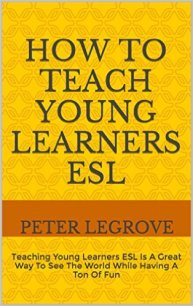
I just a call to do a demo class for grade one students at a local primary school. Now when you are doing a demo class you don’t really know what you are in for. I had already been teaching kids in China for a number of years now, so I always expect the unexpected. But I never expected what I was getting myself into this time. Most schools have what they call a multi-media classroom that sits around 300 students. So when I got there, there were around 300 students sitting in their class groups and they were squeezing more in. The multi media classroom is like a mini lecture hall with the teacher at ground level and all the students are looking down at the teacher. All I had was a cordless microphone, a whiteboard and an overhead projector, and a whole bunch of flashcards I brought myself. The whiteboard was near useless as the pens were not very bright and the kids couldn’t read.
Anyway I turned it into an entertainment event. I would say “How are you?” and then point the microphone to the kids and they would yell back “How are you?” or “I’m fine and you” depending on how much English they knew. Then I would call out the class groups, like Class 1 and they would answer. I would do this hopping between classes. As I held out the microphone to each class, they tried to yell the loudest. Then I walked up and down the stairs to get a bit closer to the students. And they were making the most of the microphone. I would keep the questions really simple like ‘How old are you?” “What class are you in?” On the stairs I could ask “What is your name?” As long as all the classes had a chance to speak, they loved it.
Then I started showing the flashcards. They were simple animal flashcards ideal for grade 1. I would put the flashcards up on the overhead projector, sliding them into the light so the whole flashcard slowly slid into view. And the students had to guess what animal it was. It was actually dead silent in the classroom as I slowly slid the picture down into view. Then the yelling started. As they all tried to out yell each other. Then I would put the flashcard up on the whiteboard, with little magnets I used to carry with me. I made up sentences with the flashcards., like “What color is the elephant. Class 1?” Class 1 would answer and if they couldn’t I would call another class. As long as every class was involved they loved it A lot of fun had by all, and to date I would say that is my most successful class. It was my introduction into ‘Teaching Goes Massive’
Teaching kids in Asia is a ton of fun, but you need to put in a bit of effort. Kids love you if they can do things in your class, as there is a lot of pressure to succeed. If you can turn your class into a fun class and the kids learn a sentence or two, then everybody is happy.
For more information about teaching in China click here. http://animalsdinosaursandbugs.com/Teach-In-China.html
This article is copyright © peter legrove.
http://www.amazon.com/How-Teach-Young-Learners-ESL-ebook/dp/B01915020M
You can copy this webpage and/or this article, and use it on your website, blog and in any print or digital media that is legal and not involved in the exploitation of any person or child, but you cannot change any wording and you must leave this copyright box intact and visible.








